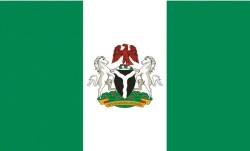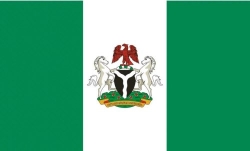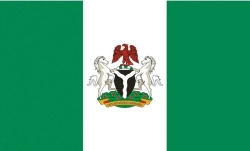
Kaduna State, located in the Northwestern region of Nigeria, is a historically and economically significant state, often referred to as the political capital of Northern Nigeria. With its diverse ethnic makeup, strategic geographic location, and robust economic activities, Kaduna plays a crucial role in the country’s socio-political and economic landscape.
The administrative division of Kaduna into 23 Local Government Areas (LGAs) allows for effective grassroots governance, regional development, and service delivery across urban and rural zones. These LGAs are instrumental in infrastructure development, agricultural productivity, educational administration, and cultural preservation.
In this article, you will find the complete list of LGAs in Kaduna State, including headquarters, geographical location, economic highlights, population insights, and key features.
Quick Facts About Kaduna State
-
Capital: Kaduna City
-
Slogan: “Centre of Learning”
-
Number of LGAs: 23
-
Region: North-Western Nigeria
-
Creation Date: May 27, 1967
-
Major Ethnic Groups: Hausa, Gbagyi, Adara, Bajju, Atyap, Jaba, Fulani, and others
-
Main Languages: Hausa, English, and numerous indigenous languages
-
Key Economic Activities: Agriculture, manufacturing, education, trade, and mining
-
Notable Institutions: Ahmadu Bello University (ABU), Nigerian Defence Academy (NDA), Kaduna Polytechnic, etc.
Full List of LGAs in Kaduna State
Here is the complete list of all 23 LGAs in Kaduna State, alongside their administrative headquarters:
| S/N | LGA Name | Headquarters |
|---|---|---|
| 1 | Birnin Gwari | Birnin Gwari |
| 2 | Chikun | Kujama |
| 3 | Giwa | Giwa |
| 4 | Igabi | Turunku |
| 5 | Ikara | Ikara |
| 6 | Jaba | Kwoi |
| 7 | Jema'a | Kafanchan |
| 8 | Kachia | Kachia |
| 9 | Kaduna North | Doka |
| 10 | Kaduna South | Makera |
| 11 | Kagarko | Kagarko |
| 12 | Kajuru | Kajuru |
| 13 | Kaura | Kaura |
| 14 | Kauru | Kauru |
| 15 | Kubau | Anchau |
| 16 | Kudan | Hunkuyi |
| 17 | Lere | Saminaka |
| 18 | Makarfi | Makarfi |
| 19 | Sabon Gari | Dogarawa |
| 20 | Sanga | Gwantu |
| 21 | Soba | Maigana |
| 22 | Zangon Kataf | Zonkwa |
| 23 | Zaria | Zaria City |
Detailed Overview of Each LGA in Kaduna State
1. Birnin Gwari
-
Location: Western Kaduna
-
Notable For: Gold mining and agriculture
-
Challenges: Insecurity and rural development gaps
-
Main Crops: Maize, millet, groundnut
2. Chikun
-
Headquarters: Kujama
-
Demography: Mixed urban-rural LGA
-
Highlights: Residential areas for many civil servants
-
Infrastructure: Schools, hospitals, and highways
3. Giwa
-
Known For: Agricultural production
-
Population: Predominantly Hausa-Fulani
-
Markets: Giwa and Shika livestock markets
4. Igabi
-
Location: Close to Kaduna city
-
Features: Urban sprawl, educational institutions
-
Institutions: Nigerian College of Aviation Technology (NCAT), Zaria Airport
5. Ikara
-
Headquarters: Ikara town
-
Economy: Ginger and tomatoes cultivation
-
Cultural Insight: Hausa-speaking majority
6. Jaba
-
Headquarters: Kwoi
-
Ethnic Group: Predominantly Ham people
-
Economy: Craft making, yam cultivation
-
Unique Feature: Nok cultural heritage
7. Jema’a
-
Headquarters: Kafanchan
-
Features: One of the most urbanized LGAs in Southern Kaduna
-
Commerce: Kafanchan is a rail and road transport hub
8. Kachia
-
Key Activity: Ginger cultivation
-
Location: Central Kaduna
-
Military Presence: Nigerian Army Schools and bases
9. Kaduna North
-
Headquarters: Doka
-
Features: Core administrative part of Kaduna metropolis
-
Facilities: Government House, ministries, and major markets
10. Kaduna South
-
Headquarters: Makera
-
Highlights: Industrial layout and business districts
-
Cultural Groups: Predominantly Gbagyi and Hausa
11. Kagarko
-
Headquarters: Kagarko town
-
Environment: Forest reserves and hilly terrain
-
Occupation: Subsistence farming and hunting
12. Kajuru
-
Population: Multi-ethnic
-
Activities: Farming, local crafts, and food processing
-
Features: Scenic landscapes and hills
13. Kaura
-
Culture: Rich in Southern Kaduna heritage
-
Languages: Atyap and other indigenous dialects
-
Economy: Agro-based
14. Kauru
-
Known For: Large landmass and farmlands
-
Development Needs: Infrastructure and education
15. Kubau
-
Headquarters: Anchau
-
Trade: Grains and legumes
-
Demographics: Hausa and Fulani farmers
16. Kudan
-
Headquarters: Hunkuyi
-
Economic Base: Agriculture and small-scale mining
-
Local Market: Hunkuyi market is popular regionally
17. Lere
-
Headquarters: Saminaka
-
Attractions: Mountainous terrain, moderate weather
-
Agriculture: Root crops and vegetables
18. Makarfi
-
Location: Northern Kaduna
-
Farming: Rice, maize, sugarcane
-
Relevance: Named after former governor, Ahmed Makarfi
19. Sabon Gari
-
Headquarters: Dogarawa
-
Urbanization: Part of greater Zaria city
-
Institutions: Ahmadu Bello University (ABU), Nuhu Bamalli Polytechnic
20. Sanga
-
Headquarters: Gwantu
-
Diversity: Mixed ethnic and religious groups
-
Challenges: Insecurity in rural areas
21. Soba
-
Headquarters: Maigana
-
Economic Strength: Grains, legumes, and cotton
-
Population: Rural and densely farmed
22. Zangon Kataf
-
Headquarters: Zonkwa
-
Ethnic Majority: Atyap people
-
Cultural Festivities: Rich traditions and annual celebrations
23. Zaria
-
Urban Hub: Historical city with strong Islamic heritage
-
Education: Home to ABU and other prominent schools
-
Markets: Sabon Gari market, Zaria central market
Strategic Importance of LGAs in Kaduna State
The Local Government Areas in Kaduna State serve as critical units of development and governance, especially in:
-
✅ Education – Hosting several federal institutions across LGAs like Zaria, Kaduna North, and Sabon Gari
-
✅ Agriculture – Ginger from Kachia, grains from Giwa and Soba, vegetables from Kaura
-
✅ Infrastructure Development – Ongoing road construction, rail, and telecom projects
-
✅ Security Operations – Military and paramilitary bases across Kaduna for national defense
-
✅ Tourism & Culture – Nok culture in Jaba, Atyap heritage in Zangon Kataf, historical sites in Zaria
FAQs About Kaduna State LGAs
Q1: How many LGAs are there in Kaduna State?
A: Kaduna State has 23 Local Government Areas.
Q2: Which LGA is the capital of Kaduna State?
A: The capital city is Kaduna, spread across Kaduna North and Kaduna South LGAs.
Q3: What are the most urban LGAs in Kaduna State?
A: Kaduna North, Kaduna South, Sabon Gari, Zaria, and Jema’a.
Q4: What is the main economic activity in most LGAs?
A: Agriculture—especially maize, ginger, rice, and groundnut cultivation.
Q5: Which LGAs are part of Southern Kaduna?
A: Jaba, Jema’a, Kaura, Kauru, Sanga, Zangon Kataf, and Kagarko, among others.
Conclusion
Kaduna State’s 23 Local Government Areas collectively shape one of Nigeria’s most important and diverse states. From the academic and cultural centers of Zaria to the agricultural heartlands of Giwa, Soba, and Kachia, each LGA contributes uniquely to the state's strength.
Understanding the geography, economy, and demographics of these LGAs is essential for development planning, investment, governance, and community engagement.
Whether you're a researcher, policymaker, tourist, or entrepreneur, Kaduna’s LGA framework offers invaluable insight into Nigeria’s heartland of learning and leadership.


